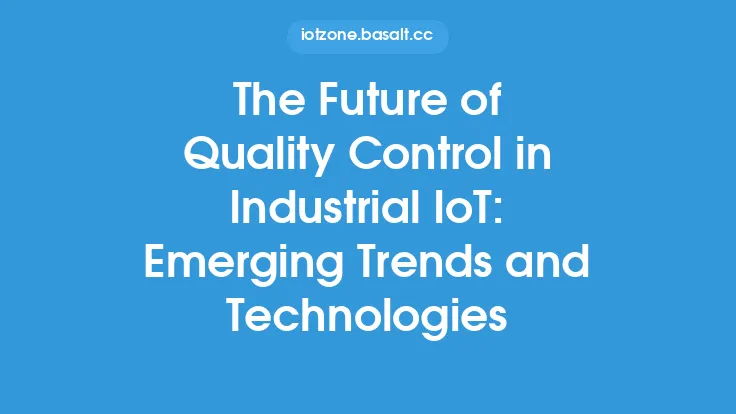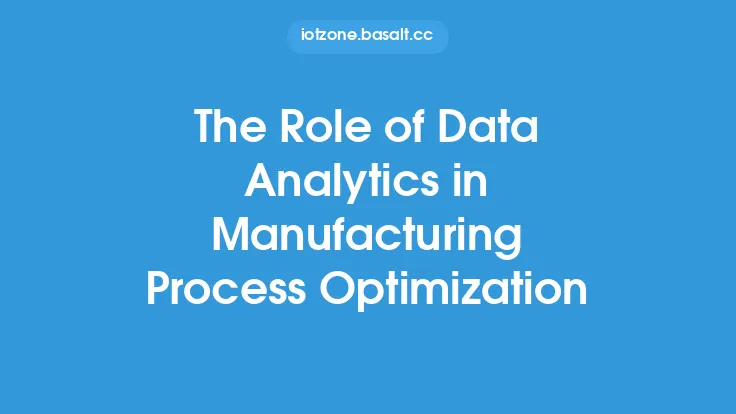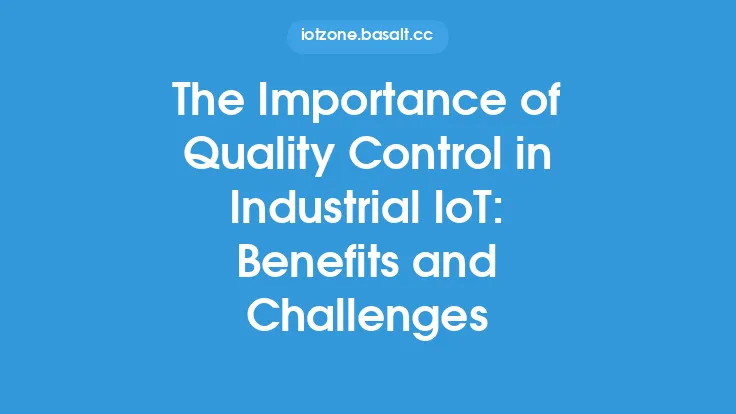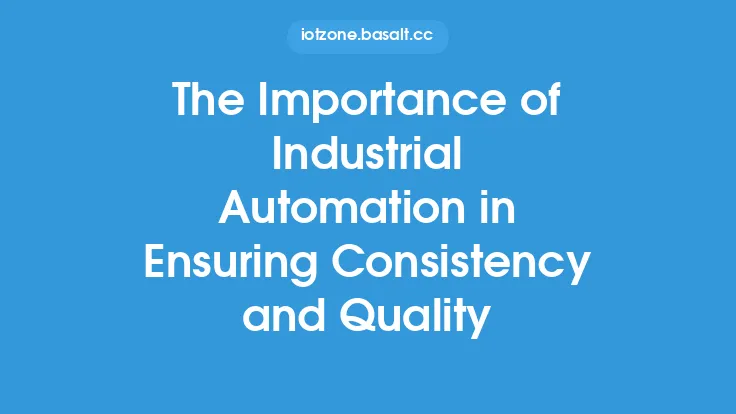The Industrial Internet of Things (IIoT) has revolutionized the way industries operate, with a vast network of connected devices and sensors generating a massive amount of data. This data can be leveraged to improve quality control, which is a critical aspect of industrial operations. Quality control is the process of ensuring that products or services meet specific standards and requirements, and data analytics plays a vital role in this process. In this article, we will explore the role of data analytics in quality control for Industrial IoT.
Introduction to Data Analytics in Quality Control
Data analytics is the process of examining data sets to conclude about the information they contain. In the context of quality control, data analytics involves analyzing data from various sources, such as sensors, machines, and production lines, to identify trends, patterns, and anomalies. This analysis helps to detect potential quality issues, predict maintenance needs, and optimize production processes. Data analytics can be applied to various aspects of quality control, including defect detection, predictive maintenance, and quality monitoring.
Types of Data Analytics in Quality Control
There are several types of data analytics that can be applied to quality control in Industrial IoT, including:
- Descriptive analytics: This type of analytics involves analyzing historical data to identify trends and patterns. Descriptive analytics can help to identify quality issues that have occurred in the past and provide insights into the root causes of these issues.
- Predictive analytics: This type of analytics involves using statistical models and machine learning algorithms to predict future quality issues. Predictive analytics can help to identify potential quality issues before they occur, allowing for proactive maintenance and quality control.
- Prescriptive analytics: This type of analytics involves using optimization techniques to identify the best course of action to take in response to quality issues. Prescriptive analytics can help to optimize production processes and improve overall quality.
Data Sources for Quality Control
In Industrial IoT, data for quality control can come from a variety of sources, including:
- Sensors: Sensors can provide real-time data on temperature, pressure, vibration, and other parameters that can affect product quality.
- Machines: Machines can provide data on production rates, downtime, and other parameters that can affect product quality.
- Production lines: Production lines can provide data on production volumes, quality control checks, and other parameters that can affect product quality.
- Quality control checks: Quality control checks can provide data on product quality, including defect rates and quality metrics.
Data Analytics Techniques for Quality Control
Several data analytics techniques can be applied to quality control in Industrial IoT, including:
- Statistical process control: This technique involves using statistical methods to monitor and control production processes.
- Machine learning: This technique involves using machine learning algorithms to predict quality issues and optimize production processes.
- Deep learning: This technique involves using deep learning algorithms to analyze complex data sets and identify patterns and trends.
- Data mining: This technique involves using data mining techniques to identify patterns and trends in large data sets.
Benefits of Data Analytics in Quality Control
The use of data analytics in quality control can provide several benefits, including:
- Improved product quality: Data analytics can help to identify potential quality issues before they occur, allowing for proactive maintenance and quality control.
- Reduced downtime: Data analytics can help to predict maintenance needs, reducing downtime and improving overall productivity.
- Increased efficiency: Data analytics can help to optimize production processes, improving overall efficiency and reducing waste.
- Cost savings: Data analytics can help to reduce costs by minimizing waste, reducing downtime, and improving overall productivity.
Challenges and Limitations of Data Analytics in Quality Control
While data analytics can provide several benefits in quality control, there are also several challenges and limitations to consider, including:
- Data quality: Data quality is critical to accurate analysis and decision-making. Poor data quality can lead to inaccurate results and poor decision-making.
- Data integration: Data integration is critical to combining data from multiple sources and providing a comprehensive view of quality control.
- Scalability: Scalability is critical to handling large data sets and providing real-time analysis and decision-making.
- Security: Security is critical to protecting sensitive data and preventing unauthorized access.
Best Practices for Implementing Data Analytics in Quality Control
To implement data analytics in quality control effectively, several best practices should be considered, including:
- Define clear goals and objectives: Clear goals and objectives should be defined to ensure that data analytics is aligned with business objectives.
- Develop a data strategy: A data strategy should be developed to ensure that data is collected, stored, and analyzed effectively.
- Implement data governance: Data governance should be implemented to ensure that data is accurate, complete, and secure.
- Provide training and support: Training and support should be provided to ensure that users can effectively use data analytics tools and techniques.
Conclusion
Data analytics plays a critical role in quality control for Industrial IoT, providing insights into production processes, predicting quality issues, and optimizing production processes. By applying data analytics techniques, such as statistical process control, machine learning, and deep learning, industries can improve product quality, reduce downtime, and increase efficiency. However, several challenges and limitations must be considered, including data quality, data integration, scalability, and security. By following best practices, such as defining clear goals and objectives, developing a data strategy, implementing data governance, and providing training and support, industries can effectively implement data analytics in quality control and achieve significant benefits.





